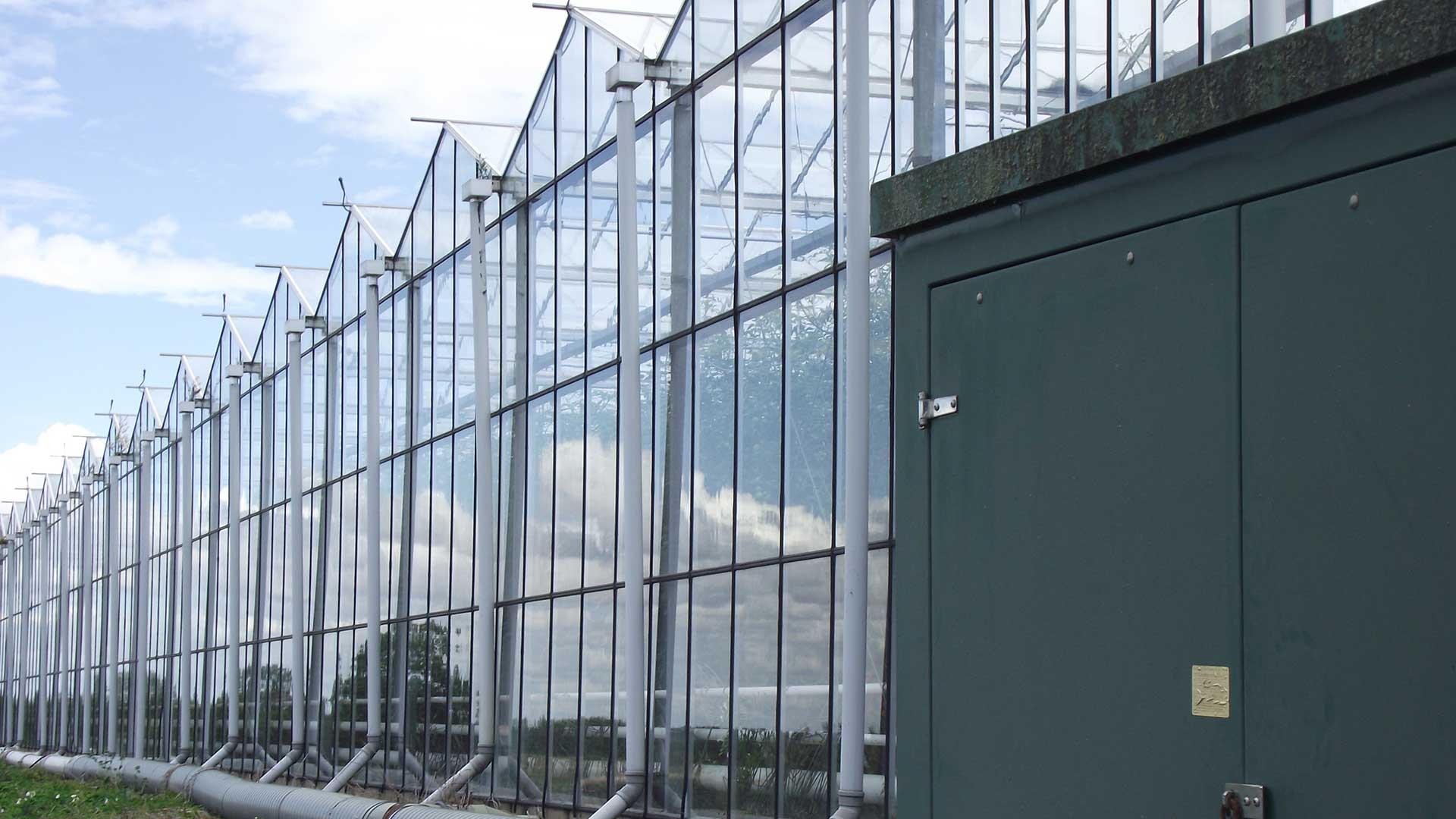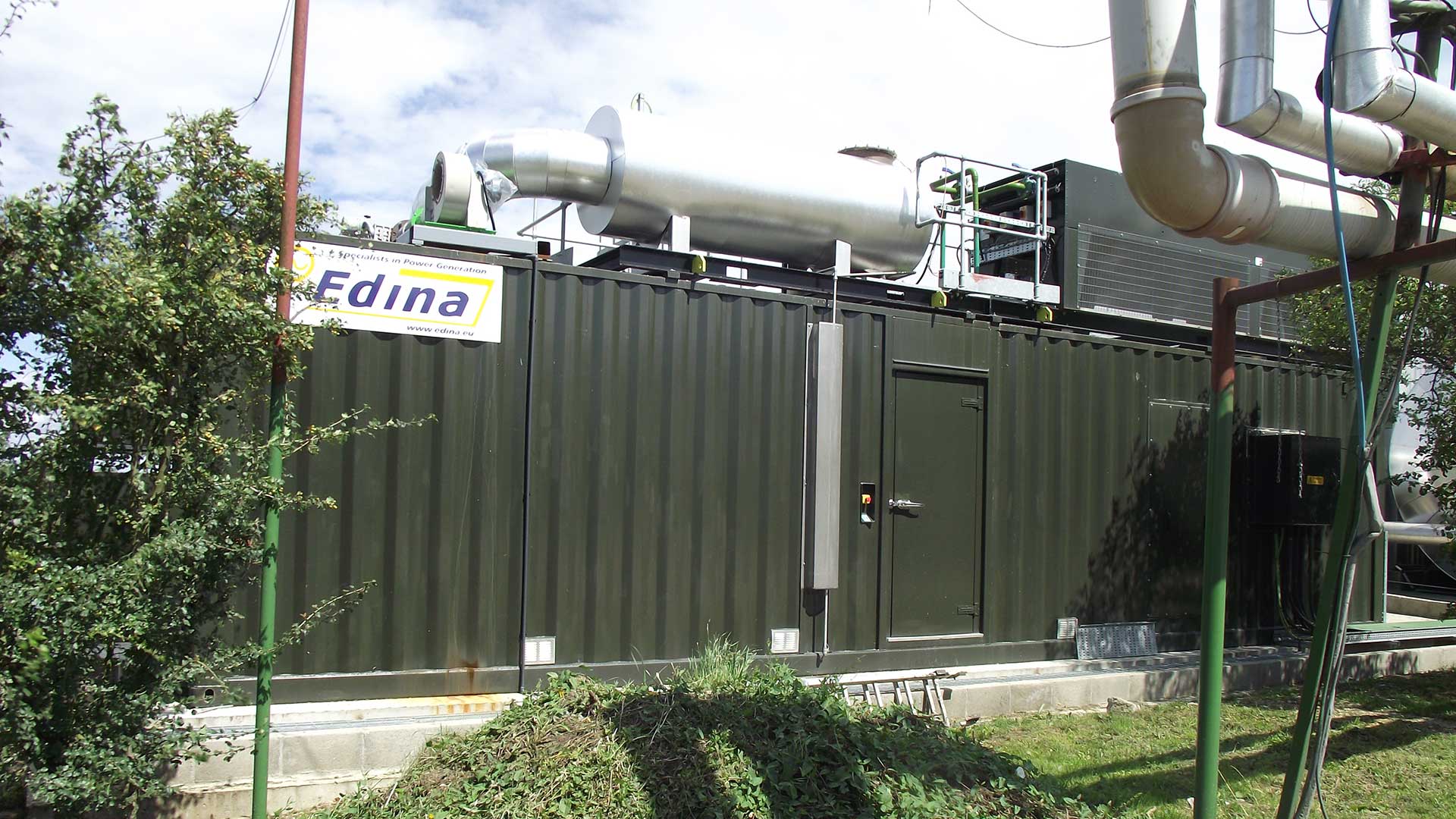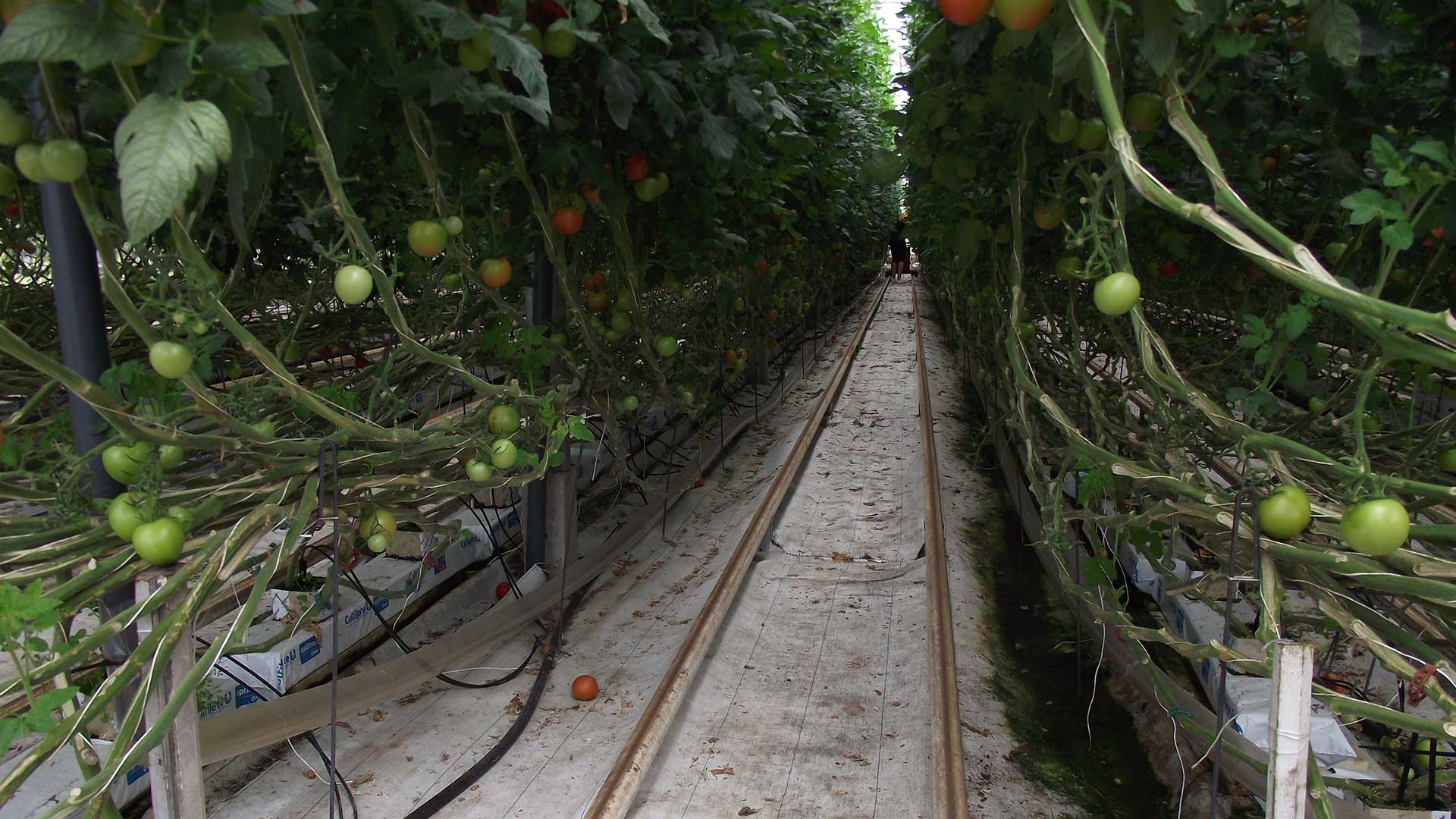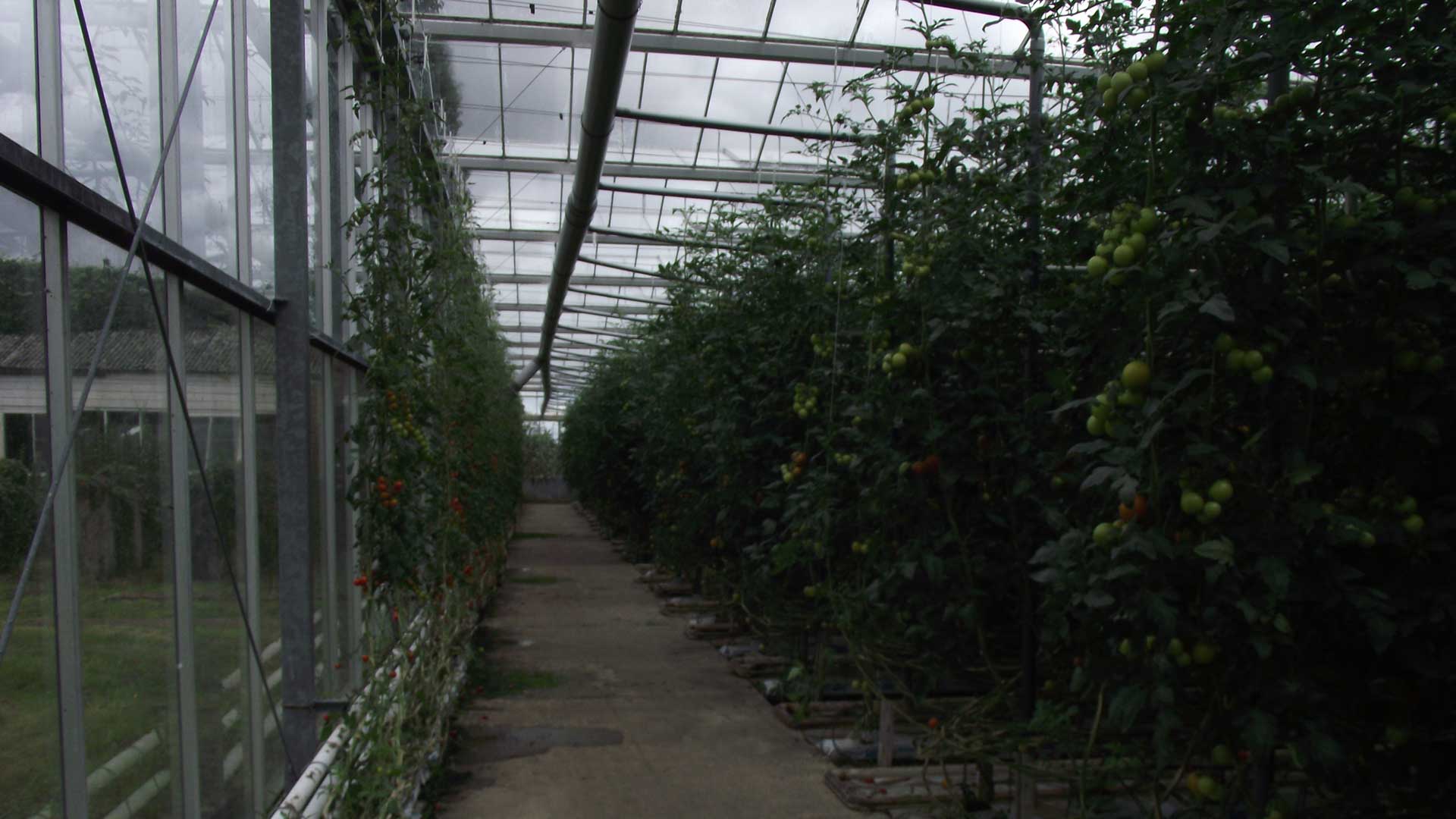Edina biogas Combined Heat and Power (CHP) plant supports unique AD project at Guy and Wright Farm. The AD scheme is unique and is the only commercial unit in the world where the biogas CHP exhaust is cleaned to provide CO2 for tomato growing in greenhouses. So not only is the energy in the biogas used, but also the end product of the biogas as well.





Edina biogas Combined Heat and Power (CHP) plant supports unique AD project at Guy and Wright Farm. The AD scheme is unique and is the only commercial unit in the world where the biogas CHP exhaust is cleaned to provide CO2 for tomato growing in greenhouses. So not only is the energy in the biogas used, but also the end product of the biogas as well.
Guy and Wright is a small commercial greenhouse tomato producer near Bishop Storford. They have approximately 3 acres of glasshouse, and tomatoes are produced for major supermarkets.
When energy costs rocketed and many other producers were failing, the inspirational John Wright looked to alternative energy sources.
The digestion system was installed 10 years ago when the family built their own digesters, successfully collecting the gas and initially using it to run small gas turbines whose heat drastically reduced their energy bills. This process also enabled them to apply for ROCs.
The initial feedstock was waste fruit produced on site but this increased to include waste produce from local markets and waste organic processing sludges.
In 2013, the whole process was rebuilt with the installation of new SCADA system, gas holder, biogas clean-up and 525kW CHP; and the Codinox exhaust treatment system for CO2 addition to the greenhouse.
In 2015 the plant was extended with the installation of a further digester and an additional biogas CHP. With this recent installation of a further 600kWe CHP and increased biogas storage and gas collection the amount of heat produced and power exported is to increase substantially and may double.
The addition of CO2 to tomato growing greenhouses is an established process and always uses the CO2 produced in a natural gas boiler or a natural gas fuelled CHP plant. With a natural gas CHP plant a clean fuel is required to produce very clean exhaust gas for the residual Carbon Monoxide and Nitrogen Oxides to be removed by the catalytic exhaust treatment.
The use of biogas in such an application up to now has been thought to be an impractical proposition by the equipment suppliers/developers. Undeterred by the pessimism and as a tomato producer requiring the CO2 for growing the tomatoes a careful study of the process needed for using biogas was made.
This required extra design, gas treatment and analysis before the engine in order to use biogas (rather than natural gas), and careful analysis and control on the exhaust after the engine. The installation involved a separate biological H2S scrubber, carbon filters and gas drying before the CHP. The exhaust is fed through an initial exhaust gas heat exchanger to control the temperature before the Codinox exhaust catalyst for treatment. Following the exhaust clean-up a further heat exchanger recovers more heat and reduces the exhaust temperature down to 60C so that it can be fed directly to the greenhouses. The recovered CO2 is fed to the greenhouses during the day.
This site sets a great example of a “closed loop” system in the agricultural and horticultural sector. This use of food waste to enable direct food production is unique. As stated using biogas in this fashion is a commercial first for Guy and Wright.
Electricity – The majority power produced by the CHP is exported to the grid after supplying all site usage. The split is approximately 7% on site with the remaining 93% exported to the grid. In 2014 and 2015 each year, the project will have produced 4500MWh of power to the farm and grid. In 2015, the 525kW CHP had an uptime of 98.7%. Taking exempted conditions into account the availability was 99.3%. The average load during this period was 521kW. The data sheet electrical efficiency of the CHP at 525kWe is 41.8%.
Heat – After the digester all the heat is supplied to the greenhouses. There is also a heat store to smooth out higher demand at night. Because of the two stage exhaust heat recovery and the need to cool the exhaust further than would be usual, the amount of heat recovered from the CHP is greater by approximately 100kW.
This means the overall efficiency of the CHP is close to 92%. This heat is directly replacing fossil fuel that would be used in a conventional tomato growing operation. In 2014 and 2015 each year the project will have produced 4000MWh of heat to the farm.
Biogas CO2 – This additional use for biogas has supplied approx. 1700 tonnes of CO2 each year to the greenhouses.
All the heat is supplied to the greenhouses, and is supplemented by the biomass boiler. The scheme is very efficient.
The digestion feedstock is waste material. The digestion process produces biogas and digestate. The digestate is spread back onto local fields as a soil amendment and fertiliser. All the biogas is fed to the CHP with an overall fuel to energy conversion of greater than 90%. The value of the electrical power produced and ROCs income contributes approximately £550,000 to the company annually.
In addition, the on-site power use saves a further £50,000, with heat provision from the biogas fuelled CHP provides a further £130,000 annual savings in comparison to heat provision from natural gas. The biogas CHP provides reliability of supply, improved forecasting of energy expenditure and strong environmental credentials for marketing the produce.
The level of CO2 saved is significant especially in view of the “recycling” of CO2 back into the tomato crop. The whole process is displacing fossil fuel CO2 release to the atmosphere. By processing organic waste in an efficient manner the potential CO2 release if the waste is just dumped (and composted) or worse landfilled is reduced.
The exported electrical power displaces fossil fuel generation from the grid, and the heat displaces natural gas use in a conventional boiler.
The digestate spread on the land displaces CO2 from the use of natural gas and grid power in the production of inorganic Nitrogen fertilizer. Approximately 60 tonnes of digestate is produced daily and used as fertiliser. By displacing artificial nitrate fertiliser, 2kg CO2e is saved for every 1kg artificial fertiliser that would have been produced. This annual output of nearly 22,000 tonnes saves 250 tonnes CO2e per year and is enough to treat around 200 hectares.
Between 50-70 tonnes feedstock is used daily. 18,000 tonnes CO2e annually is saved by using this food waste in the digester rather than disposing of it in landfill.
Electrical supply – based on the average UK electrical (grid) supply producing 470gCO2/kWh the AD plant at Guy and Wright displaces 2060 tonnes of CO2 annually. Compared to heat production from a natural gas boiler, the AD plant at Guy and Wright saves a further 950 tonnes of CO2 being produced. Recovered CO2 for use in production amounts to 1700 tonnes annually.
The project was recognised at the UK AD & Biogas Awards 2016, and won the ‘Making the most of biogas’ category award.’

Client:
Guy and Wright Farm
Location:
Hertfordshire, United Kingdom
Capacity:
1.2MWe
Operational:
2011
Manufacturer:
MWM
Packager:
Edina
Engine Type:
1 x 525kWe TCG 2016 V12 1 x 600kWe TCG 2016 V12
Primary Fuel:
Biogas




Copyright © Edina. All Rights Reserved.